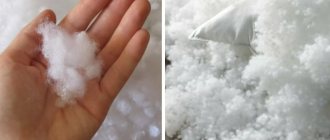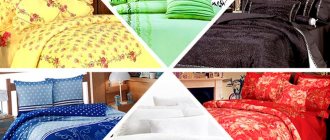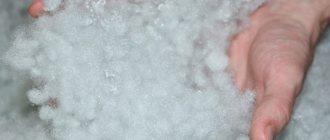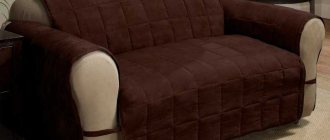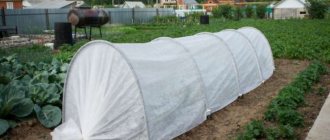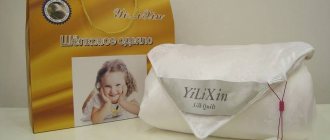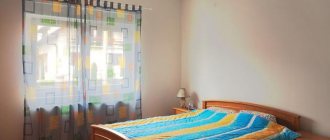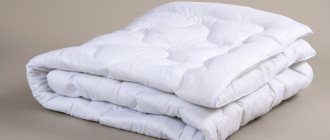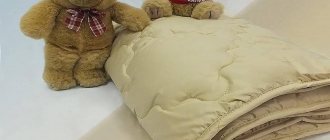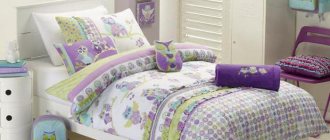Properties of wool fillings for blankets
Wool options are ideal for winter. The following types of wool are used for filling.
camel
It pricks if it is outside. You can't feel it in the case. Absorbs moisture up to 30% of its weight. Lets air through. Useful for diseases of bones and joints. Due to the prickliness, a light massage of the skin is obtained, rejuvenating and making it elastic. This is a warm and light blanket, cozy and durable.
Camel fluff does not prick, it is soft and gentle. It is collected from the cubs. Used for open blankets.
Sheep
Soft, pleasant, cozy. Wear-resistant. Relaxes tired muscles. Products made from sheep's wool are heavy and will be pleasant to those who love peace. Gives a feeling of reliability. Absorbs and releases moisture well, breathable.
Merino wool - an Australian sheep - is considered the best among sheep wool. Capable of self-cleaning.
Virgin
It is collected from lambs for 4-6 months by hand and is not processed in any way. It is very thin, delicate, soft, shiny. It is considered an elite material.
Cashmere
Cashmere blanket is the lightest, warmest and softest. It calms the nervous and muscular system, removes fatigue. Cashmere is light down from the chest and neck of a goat that lives in the Himalayas. Expensive luxury items are made from cashmere.
What wool is the warmest for blankets: camel or any down-undercoat.
Down, feather (down-feather species)
What is the warmest filling for a duvet – down, of course. The following types are used for duvets:
- Eider down is the rarest and most expensive, soft and cozy. It is rare to find. Warms better than other types of down.
- White and gray goose down is common. The products are very soft, warm, durable.
- Duck down is cheaper than others. Not as warm, less durable.
Duvet pros and cons:
- absorbs moisture up to 45% of its own weight;
- allows air to pass through;
- service life 15-20 years;
- causes allergies;
- difficult care;
- It is difficult to remove the resulting moisture outside.
Waterfowl down is considered the warmest material for winter species.
Fillers made from vegetable fibers
There are many types of fillers made from natural fibers. They are extracted from various plants.
Silk
Non-allergenic, absorbs liquid, does not wrinkle, does not electrify, does not accumulate dust. If you need to choose a blanket for the summer, a silk one will do. It cools the skin and takes on body temperature.
Silkworm fibers are used for silk blankets. Protein threads are woven together in a chaotic manner.
Eucalyptus, bamboo
Hypoallergenic antibacterial filler. It makes an airy blanket, light and soft. Good hygroscopicity and breathability.
Eucalyptus fruits are useful for people with lung diseases. Bamboo ones are suitable for those with skin diseases. These are blankets with artificial filling.
Seaweed
Improve blood circulation, rejuvenate the skin. They have an antibacterial effect. Using a special manufacturing technology, it does not smell or crumble.
A good product for skin problems. Helps it retain moisture due to the content of nutrients.
Flax fiber
Blankets made of linen fiber have an antistatic and antibacterial effect. Natural fabric perfectly absorbs moisture. Used for bedding for several thousand years.
Cotton
Hygroscopic, breathable, non-allergenic. Suitable for summer. Do not accumulate static electricity, wear-resistant. The cotton blanket does not pill.
A flannelette soft product is made from cotton with the addition of chemical or artificial fibers. It is cozy and light, easy to care for. It is often taken home for babies or preschools.
Artificial and synthetic
There are different blankets with synthetic filling. They are mainly made from polyester threads.
swansdown
A blanket filled with swan down is a hypoallergenic sleep product that is almost as warm as natural down. The absence of natural fibers makes the item unpleasant for microorganisms and mites.
It is electrified, does not allow or absorb moisture, and does not allow air to pass through.
Polyester
The following materials are available:
- The cheapest padding polyester. Forms clumps, cakes, short-lived.
- The holofiber blanket is elastic, the filler balls prevent it from rolling into lumps. The product made from holofiber is light and warm.
- Siliconized fiber is similar to fluff. These are thin polyester threads coated with silicone.
They make a semi-down blanket, the composition of which is natural down combined with chemical fibers.
Polyester product, pros and cons:
- low hygroscopicity and air permeability;
- electrified;
- inexpensive;
- weighs little;
- easy care;
- average service life.
Polyester fibers have both disadvantages and advantages.
Sofa cover: benefits
Acrylic does not fade under direct ultraviolet rays. The only downside is that the material is not able to accumulate moisture, and therefore it is not advisable to cover yourself with it while sleeping. Acrylic material is easy to wash, does not lose its shape, and most importantly, the fabric is hypoallergenic.
If you update and decorate your sofa with an acrylic throw, you can get a bedspread with the following qualities:
- Strength;
- Durability;
- Aesthetics.
If you want to choose a cape that is inexpensive, stylish and, most importantly, causes a pleasant sensation when touched, then you should choose satin or satin. Fur shaggy bedspreads are a product that can create coziness and comfort in any room, and most importantly, such capes will always be fashionable.
The main function of an acrylic product is decorative.
They give the interior space volume, style and a luxurious look. They can be made of natural and faux fur, and if the product is complemented with pillows, then the sofa or armchair will simply be unrecognizable.
Fabric for the cover
Fabric for a blanket, which is better:
- Duvet, how to choose fabric: you need a material with a dense weave that does not release down and feathers. It is impregnated with a special solution.
- It is better to choose a thick, cotton cover for the blanket if it is made of wool. Percale, twill, teak are suitable.
- Thin, delicate materials – cambric, satin – are suitable for a down product or one with underfur.
- For silk, a cover made of thick cotton or silk is suitable. These threads go well together. Satin jacquard weave fabric is suitable.
The inner and outer material must be combined for the product to last a long time.
What bedspread size should I choose?
The parameters of the bedspread must fit harmoniously into the overall interior of the room. A bedspread that is too large will lie on the floor, and a narrow or short one may look awkward. When taking measurements of furniture, you need to study the proposed sizes of blankets and bedspreads from the manufacturer.
You might be interested in Using paints for suede and its varieties: blue and others
The structure of the fabric should fit harmoniously into the chosen method of laying out the bedspread. If you plan to lay out corners on the floor, then the appropriate measurements must be taken before going to the store.
Individual operating characteristics are taken into account. Expensive fabric and delicate care are not always suitable for laying the long edge of a bedspread across the floor where a small child or pet is running. All features must be taken into account.
Harmoniously selected bedspread size
Choice
Choosing a blanket, tips and tricks:
- Fiber options - bamboo, eucalyptus, linen - should be reserved for the warm season.
- The blanket is all-season, which means: it is suitable for any season. It comes from any materials. Therefore, you need to find out the types of density of a particular filler and choose the average one. The all-season blanket is collapsible. There is a thin summer half and a thicker demi-season half. They are fastened with buttons and it turns out winter. Thermal conductivity is important. The product should warm in winter and cool in summer.
- If you want a blanket that is warm and light, you should choose down or swan's down.
- We choose a duvet: it should be light, without an unpleasant odor. Shape stability - if you crumple a piece of a thing and let it go, after 20 minutes it will become the same. If the composition contains feathers, they should be small and not prickly.
- How to choose a blanket based on filling: synthetic, bamboo or eucalyptus are suitable for allergy sufferers. For hot climates, they are recommended from natural fibers. In the cold, down or wool is better.
- How to choose blankets and pillows. The pillow should follow the shape of your neck. When purchasing at the same time, it is worth purchasing both products from the same trusted manufacturer, this will make it easier to care for them.
- For a patchwork blanket, padding polyester is usually chosen. If you want naturalness, it would be right to pay attention to the cotton version.
- What is the warmest blanket made of: down. Wool ones are also quite warm. Depending on the density, they can sometimes be warmer than down ones. Warm blanket filling can be synthetic if the density is high and the material allows air to circulate.
What is the best material to buy from: camel or merino wool is suitable for durability, down is suitable for warmth. For lightness - bamboo, eucalyptus, synthetics.
On a note
Interesting: horse products are not made from horse hair. This is the name given to a thin blanket that gets tangled in the legs.
Bedspread for a corner sofa and fabric for it
You can sew a cover by making a fabric with an elastic band, for which, in principle, it is enough to carry out a few simple steps. Which canvas should I choose? It is worth noting that the choice of material is far from the last moment in decorating upholstered furniture, and it will influence what the interior will be like, for example, elegant and festive or restrained and classic.
Modern capes can be from:
- Fur;
- Tapestry;
- Satin;
- Silks;
- Jacquard;
- Atlas;
- Microfiber and more.
It would seem that the choice is simply huge, and the bedding can be very different, but it is important that the linen corresponds not only to fashion trends, but also to personal preferences. Tapestry products are made from a material such as cotton, which has qualities such as strength, wear resistance and durability.
You can sew a cape of an unusual shape with your own hands.
Most importantly, you don't have to waste too much time. Caring for capes made of tapestry and microfiber is quite simple, and most importantly, the material does not fade or become covered with pills.
Manufacturers
Rating of companies making blankets:
- The ranking is topped by the well-known Shchigrov down and feather factory, Belashoff. She produces a variety of bed textiles.
- One of the popular brands is CLEO. The types of blankets and other bedding items are constantly being updated. All products comply with international quality standards and have all the necessary certificates.
- Medium-priced ComfortLine textiles are made from a good cotton base. Imported materials.
- Primavelle - the best eco-friendly products with beautiful designs.
- Silk varieties of Chinese origin are represented in Russia by the company Southern Path. They have all the necessary certificates.
- Average prices from the manufacturer Verossa. There are options with a variety of fillings - bamboo, algae, swan fluff, camel hair.
These are the best blanket manufacturers with a large assortment and good quality.
Reviews:
Valeria, 53 years old: I have had a camel blanket for almost 20 years. It is thick and warms well in winter. When I lie under it, my back stops hurting.
Anton, 27 years old: I sleep under down all year round. It’s cold at home, even in summer I can’t stay warm without my favorite blanket. But in the summer I sweat a lot under it.
Karina, 31 years old: constant allergies prevent me from using anything other than synthetics. But I’m thinking of trying bamboo, they say it helps with allergies.
Vasily, 48 years old: I sleep like in childhood, under a flannelette blanket. I have a thin one, so in winter I tuck two into the duvet cover at once. But I don’t like synthetics, it’s hot and uncomfortable.
For a comfortable sleep, you need to choose the right bedding. The bedspread will give you a pleasant sleep or prevent you from getting a good night's sleep.
© 2021 textiletrend.ru
Product care
Every self-respecting manufacturer places product care rules on the label. They indicate: at what temperature to wash, in what position to dry, whether it can be wrung out and what detergents to use. Unquestioning adherence to all these points will help keep your textile purchase in its original form for a long time.
Here are the basic rules for caring for natural and synthetic options:
- For natural fabrics, cleaning is a very important point. Caring for some of them (cashmere) allows only dry cleaning, while others can be washed by hand in warm water (temperature no higher than 30 degrees);
- All types of bedspreads must be washed or dried before first use;
- Need periodic drying in fresh air;
- When washing, it is better to fill the drum only 50% - this will increase the efficiency of the washing machine;
- When washing, it is necessary to arrange items according to the type of fabric. You cannot wash natural ones together with synthetic ones;
- If there are stains on the surface, they should be removed before washing;
- It is better to dry items on a flat surface. Horizontal drying can stretch blankets;
- You should not squeeze or twist the products too much - this can deform them;
- If ironing a product is permissible, it is better to do it in a slightly damp state;
- Items must be dried immediately after washing to prevent severe “wrinkling” and creases on the fabric;
- Synthetic fabrics do not tolerate high temperatures, so it is not recommended to iron them or dry them on a radiator;
- When washing, it is better to use detergents specifically designed for this fabric;
- When storing, it is better not to use vacuum bags. They “break” the structure of the fabric.
Each fabric has its own care details. Let's list them:
- It is better to wash woolen blankets by hand using products containing lanolin or regular shampoo;
- Wool must be protected from moths and high humidity;
- Dirty spots on wool should not be wetted. They are easy to remove with a clothes brush;
- Silk loses its shine and softness from water. It is better to use dry cleaning;
- Water can cause unsightly stains on the surface of the silk. They can be removed with alcohol, however, it is better to dry clean the product;
- Products made from viscose are subject to severe abrasion. It is not recommended to sit on such blankets.
Choosing fabric for a bedspread is a difficult task. It requires the right approach and endurance. Synthetic fabrics are an option for practical housewives. Natural fabrics create a unique aura that can tune a person into the right mood!
© 2021 textiletrend.ru

